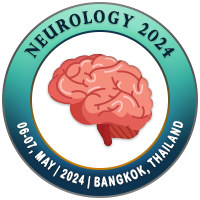
Mayowa Adeniyi
Federal University of Health Sciences Otukpo, NigeriaTitle: To be updated
Abstract
Previous investigations have enumerated the effect of prolonged bipedal orthostasis on body functions. The study investigated the effect of prolonged unipedal orthostasis on electroencephalographical tracings in young adult males. Twenty apparently healthy adult males aged 19-23 years were recruited for the study. Cardiovascular parameters and anthropometric indices were measured prior to the experiment. Exertional distress and orthostatic tolerance time were evaluated using Borg scale (6-20) and stop watch respectively as previously reported. Orthostatic tolerance time was defined as the time interval between assumption of unipedal position and the first perception of distress. Statistical test was done using SPSS 23 and significant difference was accepted at P<0.05. Prolonged unipedal orthostasis was characterised by significant increases in rate of perceived exertion and orthostatic tolerance time when compared with baseline values. During prolonged unipedal orthostasis, the frequency and amplitude of beta wave decreased, while alpha wave frequency and amplitude increased and decreased respectively when compared with the baseline. When compared with left leg orthostasis, there was an increase in alpha wave frequency during right leg orthostasis. Furthermore, stronger correlation coefficients were found between EEG fatigue index and rate of perceived exertion, orthostatic tolerance time, systolic blood pressure and diastolic blood pressure during right leg orthostasis. The results of the study showed that prolonged orthostasis modulated electroencephalographic waves with right leg orthostasis characterised by increased alpha wave frequency and increased EEG fatigue index.
Keywords: orthostasis; unipedal; electroencephalogram; exertional distress; rate of perceived exertion
Biography
To be updated.

